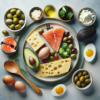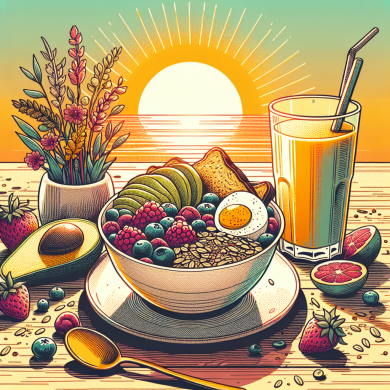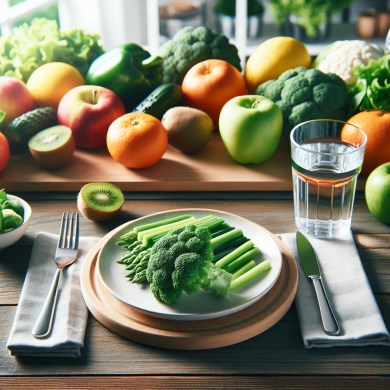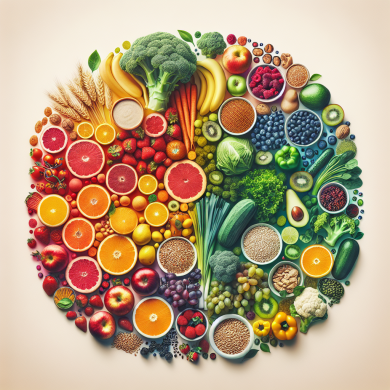Top Protein Sources for Clean Eating
Introduction
Clean eating is more than just a diet; it’s a lifestyle choice that emphasizes whole, minimally processed foods. This approach to nutrition focuses on consuming foods in their natural state, thus avoiding additives, preservatives, and artificial ingredients. One of the essential components of clean eating is ensuring adequate protein intake, which is crucial for building and repairing tissues, producing enzymes and hormones, and supporting overall health. This article explores the top protein sources that align with clean eating principles, providing you with delicious and nutritious options to meet your dietary needs.
Plant-Based Protein Sources
Lentils
Lentils are a versatile and nutrient-dense legume that fits perfectly into a clean eating regimen. Rich in protein, fiber, iron, and folate, lentils provide approximately 18 grams of protein per cooked cup. They are not only a great protein source but also an excellent way to add texture and flavor to various dishes. Lentils can be used in soups, stews, salads, and even as a base for vegetarian burgers.
Quinoa
Quinoa is a complete protein, meaning it contains all nine essential amino acids that the body cannot produce on its own. With about 8 grams of protein per cooked cup, quinoa is a fantastic choice for those seeking a plant-based protein source. Its nutty flavor and fluffy texture make it an excellent addition to salads, bowls, and as a substitute for rice or pasta.
Chickpeas
Also known as garbanzo beans, chickpeas are a staple in many cuisines worldwide. They offer approximately 15 grams of protein per cooked cup. Chickpeas are incredibly versatile, suitable for roasting as a crunchy snack, blending into hummus, or adding to salads and stews. In addition to protein, they provide fiber, vitamins, and minerals, making them a nutritious choice for clean eating.
Tofu and Tempeh
Tofu and tempeh are both soy-based products that are rich in protein. Tofu contains about 10 grams of protein per half-cup serving, while tempeh offers a slightly higher protein content at around 15 grams per half-cup. These foods are excellent for absorbing flavors and can be used in stir-fries, salads, or grilled dishes. Tempeh, being fermented, also provides gut health benefits, adding to its nutritional profile.
Nuts and Seeds
Nuts and seeds, such as almonds, walnuts, chia seeds, and hemp seeds, are excellent sources of protein, healthy fats, and other essential nutrients. A quarter-cup of almonds provides about 7 grams of protein, while hemp seeds offer around 10 grams per three tablespoons. They make for a convenient snack, can be added to smoothies, or used as toppings for yogurt and salads, enhancing both texture and nutritional value.
Animal-Based Protein Sources
Eggs
Eggs are one of the most nutritious foods available, providing a complete protein source with all essential amino acids. A single large egg contains about 6 grams of protein. Eggs are incredibly versatile, allowing for a wide range of preparation methods, from boiling and poaching to scrambling and baking. They also contain important nutrients such as vitamin B12, choline, and selenium.
Chicken Breast
Chicken breast is a lean source of protein, offering approximately 26 grams per 3-ounce serving. It’s low in fat and high in essential nutrients like niacin and vitamin B6, making it a staple in many clean eating diets. Chicken breast can be grilled, baked, or sautéed, and it’s a perfect addition to salads, wraps, and stir-fries.
Fish and Seafood
Fish and seafood are not only rich in protein but also provide essential omega-3 fatty acids, which are beneficial for heart and brain health. Salmon, tuna, and mackerel are particularly high in protein, with salmon offering about 22 grams per 3-ounce serving. These foods are best consumed fresh and cooked using methods such as grilling, baking, or steaming to preserve their nutritional integrity.
Greek Yogurt
Greek yogurt is a fermented dairy product that boasts a high protein content, with around 10 grams per 100-gram serving. It’s thicker and creamier than regular yogurt, making it a satisfying choice for snacks or meals. Greek yogurt can be enjoyed on its own or topped with fruits, nuts, and seeds. It’s also a versatile ingredient for smoothies, parfaits, and savory dishes.
Lean Beef
Lean beef, such as sirloin or tenderloin, is a rich source of high-quality protein, offering about 23 grams per 3-ounce serving. It’s also packed with important nutrients like iron, zinc, and vitamin B12. When choosing beef, opt for grass-fed options, which are typically lower in saturated fat and contain higher levels of omega-3 fatty acids and antioxidants.
Protein-Rich Grains
Amaranth
Amaranth is an ancient grain that is gluten-free and high in protein, providing around 9 grams per cooked cup. It’s also a good source of fiber, iron, and magnesium. Amaranth can be used as a side dish, added to soups, or even popped like popcorn for a nutritious snack.
Farro
Farro is a type of wheat grain that offers a hearty texture and nutty flavor, with approximately 7 grams of protein per cooked cup. It’s rich in fiber, magnesium, and vitamin B3. Farro can be used in salads, soups, or as a substitute for rice or pasta, making it a versatile addition to any meal.
Dairy Alternatives
Almond Milk
While almond milk itself is not particularly high in protein, it serves as a popular dairy alternative for those who are lactose intolerant or following a plant-based diet. When fortified, it can provide additional nutrients such as calcium and vitamin D. For a protein boost, consider pairing it with protein-rich foods like nuts or seeds.
Pea Protein Milk
Pea protein milk is a relatively new entrant in the dairy alternative market, offering a creamy texture and a protein content comparable to cow’s milk, with about 8 grams per cup. It’s an excellent option for those seeking a plant-based, protein-rich beverage without soy or nuts.
Conclusion
Clean eating encourages the consumption of whole, nutrient-dense foods, and protein is a fundamental component of this approach. By incorporating a variety of protein sources from both plant and animal origins, you can create a balanced and satisfying diet that supports your health and wellness goals. Whether you’re a vegetarian, vegan, or omnivore, the protein sources outlined in this article provide delicious and nutritious options to fuel your body and enhance your culinary repertoire. Embrace the clean eating lifestyle by exploring these top protein sources and discovering new ways to nourish yourself naturally.















Add comment